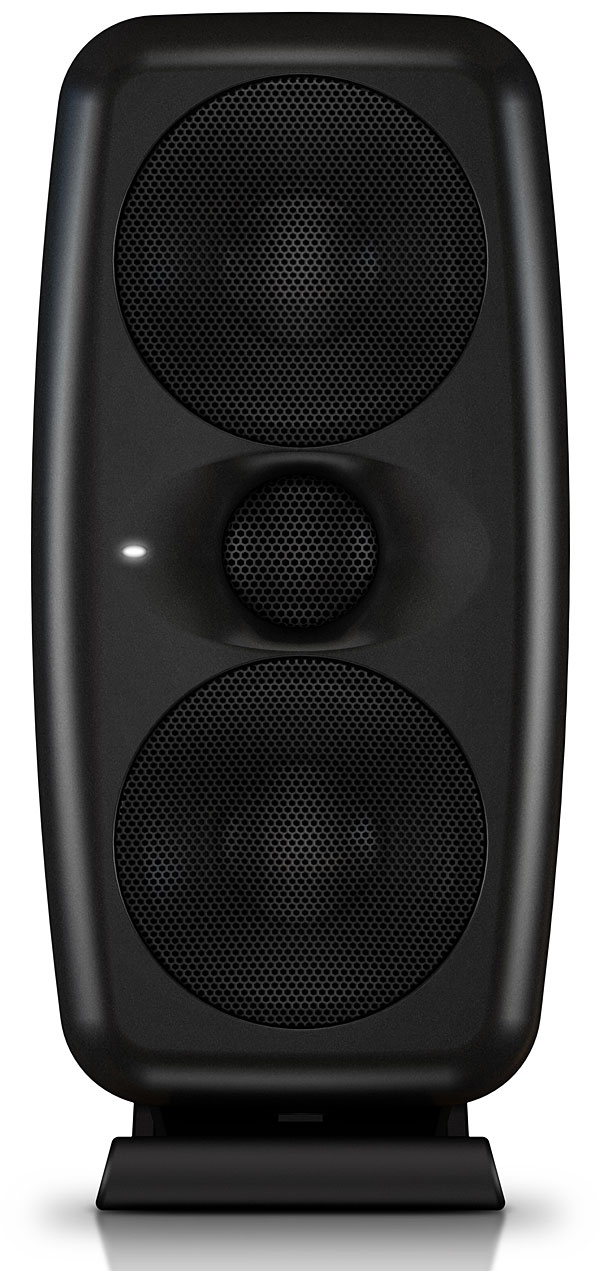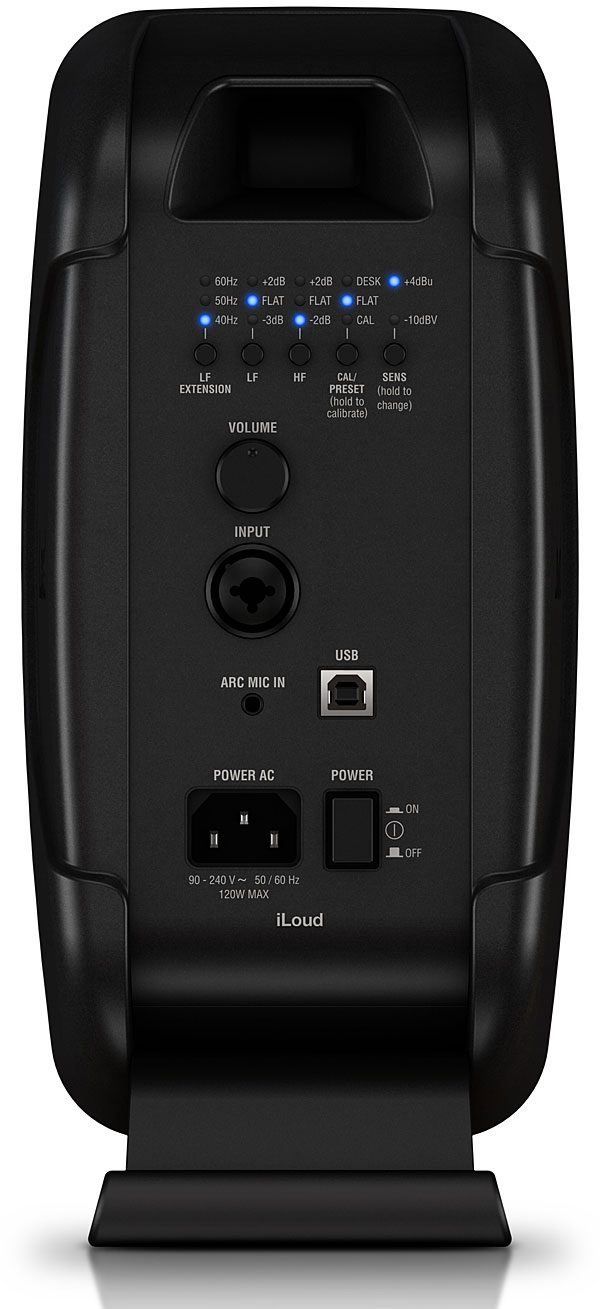IK Multimedia iLoud MTM Powered Monitor Review

AT A GLANCE
Plus
Superbly accurate tonal balance
Remarkable bass extension
Highly adaptable onboard EQ options
Onboard auto room correction
Minus
Finite output may not suit far-field listening
No auto on/off
No built-in sub integration option
THE VERDICT
IK Multimedia’s powered monitor is a great desktop audio option, and it also delivers sufficient output for far-field listening in small-size rooms.
With few of us straying far from home these days, or from our computer with its constant stream of information, entertainment, hope, and fear, desktop audio is having a moment.
For this reason, many are discovering a need for some- thing better than the crappy 2.1-channel "computer speaker" systems we bought back in the early 'aughts. What we need is an ultra-compact active monitor—like IK Multimedia's iLoud MTM.
Good product, bad name. In its defense, Italian manufacturer IK has a long tradition of naming its offerings, at first mostly software, iSomething or iOther. The MTMs, as I'll call them (it stands for midrange-tweeter- midrange), are black-plastic designs about the size of a half-gallon of milk. While far from luxurious, their lozenge- like form somehow manages to come off as elegant and even classy. More important, they're crammed with intelligent technology and features.
The driver complement on each MTM consists of a pair of 3.5-inch mid/woofers flanking a 1-inch silk-dome tweeter, with packaging efficiency maximized to achieve all-but- full-range performance from a speaker just 11 inches tall. On the big side of small, the MTMs nevertheless looked and felt perfectly in scale straddling my iMac's 21-inch screen. The driver arrangement produces what IK terms "point source behavior," controlling vertical dispersion in the midrange to reduce reflections from nearby surfaces like a desktop, thereby mitigating the strong "floor-bounce" (desk-bounce?) peak-dip response that would otherwise occur.

Each MTM packs substantial class-D amplification (30 watts for the tweeter, 70 for the woofer) and integrates DSP for crossover and dynamic- range management. This same processing delivers user-selectable EQ, with back- panel controls offering three options each for the low- and high-frequency ranges. Other controls allow for 40/50/60Hz bass-extension cutoff (higher cutoffs stretch loudness potential), and either Flat or Desk preset EQ curves, with the latter tailored to mitigate near-surface "bounce." The DSP further enables IK's proprietary ARC automatic room correction, which can be configured by directly plugging in a supplied measurement microphone with no need for other outboard hardware or software. (In case you were wondering, IK's ARC has nothing to do with the identically acronym'd, and similarly functioning, Anthem Room Correction. But let's leave that to the lawyers, shall we?)
Setup
Setting up the MTMs required first slipping on their clever supplied desktop stands, which enable 0-20-degree vertical tilt. (There are also threaded inserts for mic-stand installation, and an included pad for horizontal use, which is nonetheless noted in the fairly thorough online manual as being non-optimal for the MTM's driver array.) If you're sitting up straight and are taller than about 5 feet, 8 inches, even maximum back-tilt is insufficient to direct the tweeter at seated-ear-height—some- thing I found to be vital since the MTM's vertical directivity is, by design, fairly tight. I rectified this by sliding a chunk of one by one-inch rigid foam under each unit's front feet. The speakers are identical—you can buy singles or pairs for $350 per speaker. Despite the MTM's onboard DSP, input is analog- only, with a single combo jack accommodating balanced XLR (microphone-type), three-wire ¼-inch balanced TRS (Tip- Ring-Sleeve), or ¼-inch unbalanced plugs. Input sensitivity is selectable between "pro" (+4 dBu) and "consumer" (-10 dBV) levels via a rear-panel push- button.

For a source, I connected my iMac via USB to a vintage-but- capable Micromega MyDAC digital-to-analog converter and used unbalanced RCA cables to link the Micromega to the left and right MTMs. Despite this single-ended, "half-strength" signal, the +4 dBu input-sensitivity setting yielded plenty of gain to clip the MTMs on any correctly mastered program's peak level. Even with the speakers' gain knobs wide open, hiss generated from this setup was only audible with my ear about three inches from the tweeter. (When using a balanced DAC and balanced connections, it would likely be inaudible.) And since I had gain to spare, I ran the volume controls on both MTMs back about 1/8th rotation, which pretty much eliminated hiss altogether.
Performance
Near-field listening at a desktop is different from far-field listening, the kind we mostly do when seated a third or so of a room-length (or more) from our speakers. Near-field is in one sense "shallower" because your own room's acoustic is much less prominent in what you hear. But in a different sense it's deeper in that you "hear into" the recorded acoustic more easily, and the timbral and dynamic detail more effortlessly. With this in mind, the MTMs are extraordinarily, accurate, extended, and, within their design limits, dynamic reproducers. So good, in fact, that I'm mostly going comment on their very few weak points.





























































